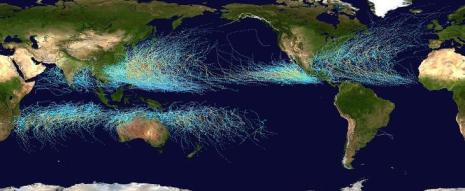Over the past 30 years, tropical cyclones have seen the area where they reach their maximum intensity extend to the north and south poles, affecting areas that are not prepared. This change was made at the rate of 53 km per decade in the Northern Hemisphere and 62 km in the southern hemisphere. Finally, during this period, the maximum impact area is enlarged 345 km, the equivalent of about three degrees of latitude.
Called hurricanes in the Atlantic and typhoons in the Pacific, tropical cyclones with their devastating winds (about 380 km / h for Typhoon Haiyan, the Philippines in 2013) particularly threatening coastal areas. Simultaneously, the torrential rains that accompany them often cause major flooding, completing “clean” the landscape of the territories that are not prepared …
Paradoxically, the regions closer to the equator, which depend on the rainfall of cyclones to participate in the reconstruction of their water resources, tend to see the levels of the last contract, hurricanes and typhoons frequenting less assiduously. However, this movement of the geographical area of cyclones is not the same everywhere. Pacific and Southern part of the Indian Ocean are most affected.
Published May 14 in the journal Nature, the study of American climatologists, who found this vast movement of cyclone activity to the poles, is also interested in why this movement. Three possibilities, closely related, are considered: the rise of global greenhouse gas emissions, the depletion of the stratospheric ozone and / or increased air pollution aerosol layer.
In parallel with this shift towards the poles, several other studies show expansion of the tropics over the same period. Thus, for Jim Kossin, the lead author of the study, “The expansion of the tropics seems to influence environmental factors that control the formation of tropical cyclone intensification and poleward. “However, studies attribute, in part, the expansion of the tropics to higher global emissions of greenhouse gases and aerosols destructive of stratospheric ozone. In short, as anthropogenic factors …

